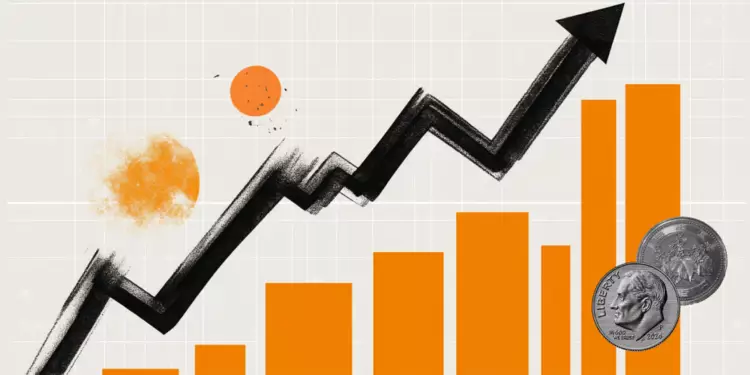In the ever-shifting landscape of global finance, the Japanese Yen (JPY) has emerged as a beacon of stability for investors looking for refuge amid heightened trade tensions. This renewed interest in the Yen can be attributed to a confluence of factors that underscore its status as a safe-haven currency. Recent trade uncertainties, particularly concerning relationships with the United States, have propelled the Yen into the spotlight, highlighting its pivotal role in international finance during turbulent times.
The JPY’s ascent is particularly pronounced against the US Dollar (USD), primarily due to the latter’s vulnerability amid fears surrounding the US economic policies. Speculation surrounding the potential severing of trade ties and the possible repercussions of tariffs has prompted many investors to retrieve their holdings from the USD, opting instead for the perceived safety of the Yen.
Macroeconomic Factors Supporting the Yen
One of the most significant macroeconomic indicators favoring the Yen is the recent surge in Japan’s core machinery orders, which rose by an impressive 4.3% in February. This figure not only defied market expectations but also signifies a substantial rebound following a decline in January. Such indicators of resilience in the Japanese economy suggest that we may be on the cusp of a positive cycle, potentially leading to increased capital investment and employment growth.
Alongside these industrial metrics, there’s a growing anticipation of a more hawkish stance from the Bank of Japan (BoJ). While other central banks, notably the Federal Reserve, are tilting towards easing, the BoJ is expected to initiate modest rate hikes in the medium term. This divergence in policy creates an appealing rate differential, supporting higher valuations of the Yen against the Dollar. It is noteworthy that this anticipated rate increase, slated for 2025, arises from a fundamental reassessment of Japan’s economic landscape, which is gradually shedding its ultra-loose monetary policy of previous years.
The Evolving Trade Dynamics
US-Japan trade negotiations represent another layer of complexity influencing JPY valuation. Current discussions have led to a glimmer of optimism regarding a possible trade deal, a sentiment echoed by comments from US President Donald Trump. However, the syncretic nature of Trump’s trade policy, marked by sudden shifts and unpredictability, continues to complicate the outlook for both countries. Investors remain cautiously optimistic yet on high alert for potential tariff escalations.
Recent dynamics saw Trump indicating potential exemptions for specific sectors, such as electronics, which had previously faced harsh tariffs. Nonetheless, the simultaneous threats of new tariffs on other critical sectors like pharmaceuticals and semiconductors keep market participants in a state of apprehension. This backdrop has only intensified the demand for the Yen, recognized as a safe harbor amid the chaos of fluctuating trade relations.
Technical Indicators and Market Sentiment
From a technical standpoint, the USD/JPY currency pair’s recent struggles to hold above critical support levels serve as an important barometer of market sentiment. Following a significant multi-month downward trend, technical analyses suggest that any recovery attempts may meet firm resistance levels. Market participants keenly observe the oscillators that remain entrenched in negative territory, pointing towards a sustained bearish momentum for the pair in the short to medium term.
The proximity of the USD/JPY pair to recent lows—hovering near 142.00—could set the stage for further declines if sellers maintain control over the market. While a significant move back above 143.00 is possible, it is likely to face significant pushback, particularly as investors lean towards selling at robust resistance levels.
The Role of Safe-Haven Assets in Uncertain Markets
The allure of the Japanese Yen extends beyond economic indicators and technical data; it embodies a broader narrative about risk perception in financial markets. The JPY is often viewed as a shield during tumultuous economic conditions, attracting flows when investor confidence falters. This traditional view reinforces the Yen’s position as a reliable store of value, especially as global economic uncertainties intensify.
Additionally, the recent trends in US Treasuries emphasize this shift in sentiment toward risk aversion. A notable sell-off in US bonds signals a waning faith in the US economic outlook, offering further support for the Yen as investor preferences tilt towards more stable currencies.
Thus, the Japanese Yen, bolstered by a combination of favorable economic data, a potentially hawkish central bank, and the strain of trade negotiations, remains poised for potential appreciation. As global financial stability becomes increasingly elusive, the Yen’s appeal as a safe haven will likely endure, marking its crucial role in the international currency markets.

